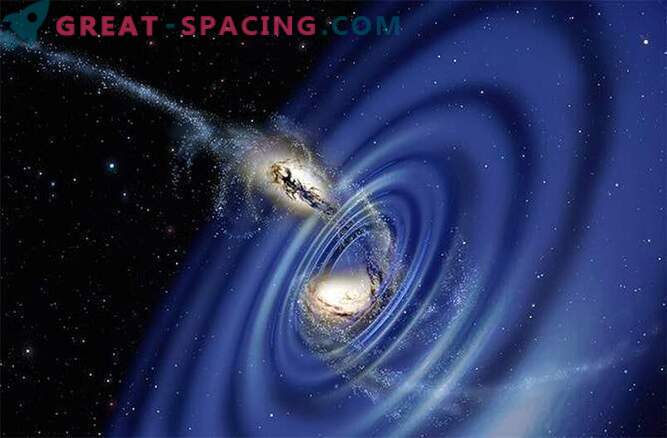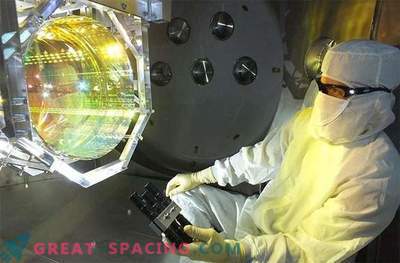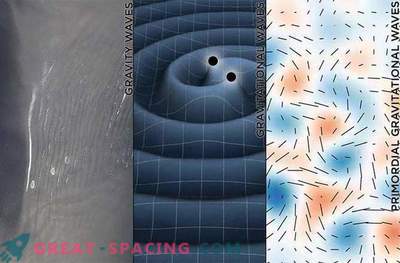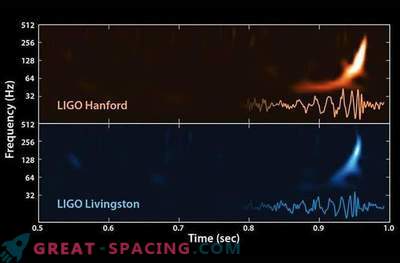
After a five-year improvement, the most powerful detector of gravitational waves again began work — the detection of the smallest oscillations in space-time.
The laser interferometric observatory that studies gravitational waves (LIGO) consists of two separate objects located in the cities of Washington and Louisiana. Its purpose is to detect the passage of gravitational waves in the space-time around us. Gravitational waves are formed during the acceleration and deceleration of the motion of space objects with an enormous mass, they can be generated, as scientists predict, such extreme cosmic events as collisions of black holes and flashes of supernovae. The propagation of gravitational waves in space, preserving the energy of these events, resembles water ripples running along the surface of a pond.
The emergence of the possibility of detecting such waves will open a new era in gravitational wave astronomy. These signals can be used to study the internal processes of a number of the most energetic events in the Universe.
The first stage of LIGO observations took place during 2002–2010, but during these 8 years the observatory did not find any signals confirming the existence of gravitational waves. The improvement of the interferometers will reduce the level of unwanted noise that interferes with the operation of the equipment. This will allow the updated observatory to switch to a new, more accurate search mode for these elusive gravitational vibrations. On Friday, the updated LIGO began research, with 3 times more sensitivity than its predecessor. According to the staff of the observatory, new and improved detectors will be able to detect gravitational waves coming from a distance of 225 million light years. In studies that were conducted prior to equipment upgrades, the length of the distance covered by the search did not exceed 65 million light years. (For comparison, the updated LIGO can detect gravitational waves that emanate from an area of space 10 times farther than the Andromeda galaxy closest to our Milky Way.) This improvement in sensitivity will allow coverage of a 27 times larger area of space relative to previous studies.
The existence of gravitational waves is predicted by Einstein’s general theory of relativity and indirect observations convince astrophysicists that they exist and have a definite influence. At the same time, it is impossible to catch them in outer space with direct observation. This means that gravitational wave oscillations are weaker than previously thought, and more sensitive devices are needed to detect them (for example, an improved LIGO).
Although the search has so far been quite complicated, the leading scientists involved in this important experiment hope to detect these waves in spacetime.
As Kip Thorn, who is a theoretical physicist at the California Institute of Technology, who was at the forefront of this research experiment, noted in an interview with BBC World Service, there is no doubt that gravitational oscillations will be found. If even the updated observatory cannot find signs of their existence, it will be very surprising. David Reiz, executive director of the LIGO program at the California Institute of Technology, claims in his press release that experimental attempts to detect gravitational waves have been held for more than 50 years, but have not yet been discovered because they are very rare and have a minimum amplitude of oscillations. .
But how small are they? Since gravitational waves pass through the space surrounding us, small oscillations arising in the space separating objects must be detected, and modern lasers of the system are able to determine oscillations that constitute one billionth of the width of an atom. But with an increase in the sensitivity of the interferometer, it may begin to sense unwanted signals. As a result, the LIGO observatory was built in the form of two distant objects located on opposite sides of the United States. If one station detects a weak signal and the second does not, it may be local fluctuations that are caused by seismic activity or moving vehicles. When a signal is detected by both stations, it can be assumed that a gravitational wave was detected.
Now, when using a new technology, stabilizing the interferometer mirrors of an improved observatory, the noise affecting the sensitivity of LIGO has been removed, which allows the detector to sense much weaker signals. This could be the beginning of a new era of astronomy studying gravitational waves. Scientists hope that due to the fine-tuning of the equipment, it will be able to catch waves at a distance 10 times greater than the previous one, which will allow us to detect echoes of the largest cosmic collisions. Moreover, as Reitz added, the observatory's ability to see 10 times more will help detect a large number of fusion of double neutron stars annually.











































